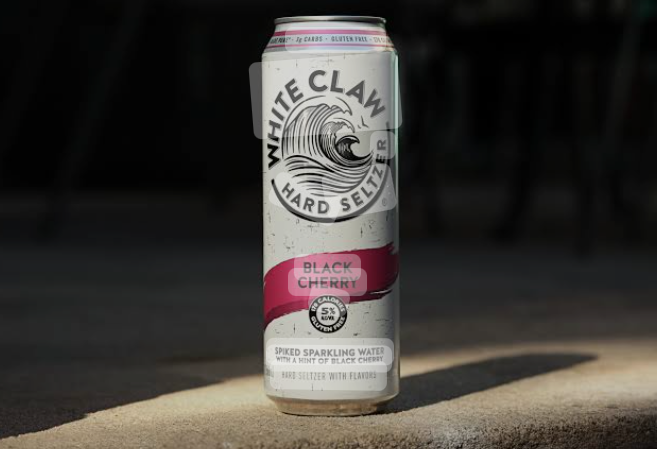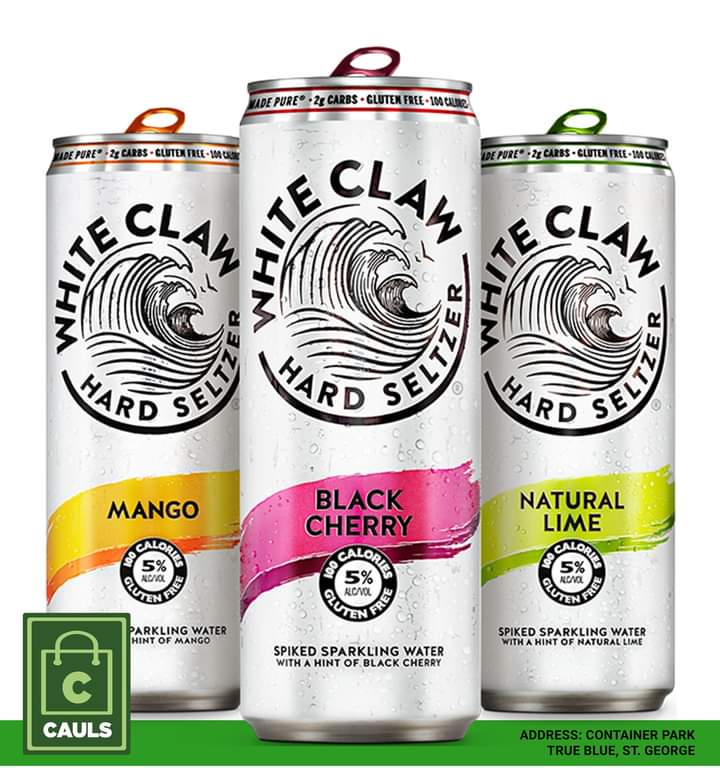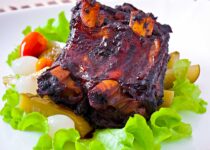White Claw Nutrition Facts:10 Health Considerations, Nutritional Comparison and Health Benefits
Discover the refreshing world of White Claw with a glance at its nutrition facts! From its crisp serving size to the carefully balanced blend of calories, carbohydrates, and alcohol content, explore the wholesome details that make White Claw the perfect choice for those seeking a delightful, low-calorie beverage. Dive into a wave of information and make informed choices about your drink of choice!

Introduction
Embark on a journey into the nutritional intricacies of White Claw, the iconic hard seltzer that transcends the boundaries of taste and wellness. As you delve into its nutrition facts, you’ll uncover a beverage designed for those who appreciate a harmonious balance between flavor and mindful consumption.
At the heart of the White Claw experience lies the revelation of serving sizes, each sip contributing to a refreshing encounter. Discover the artful calibration of calories, a testament to the brand’s commitment to crafting a beverage that not only delights the palate but also aligns with conscientious dietary choices.
Take note of the carefully measured alcohol content, offering a spirited experience without compromising on the desire for a lighter alternative. White Claw’s nutrition facts extend beyond the typical, weaving a narrative that includes the nuanced interplay of carbohydrates and sugars, creating a tapestry of taste that is both indulgent and informed.
Dive deeper into the protein and fat components, uncovering the subtle nutritional nuances that distinguish White Claw from conventional beverages. Elevate your understanding as you explore the infusion of vitamins and minerals, adding a touch of health-conscious sophistication to your beverage selection.
Unravel the mystery of ingredients, and navigate the landscape of allergens for a comprehensive view of what makes it a choice that resonates with a diverse range of preferences. Engage with the spectrum of flavor varieties, each with its own nutritional footprint, allowing you to tailor your experience to your individual taste and dietary goals.
Consider the broader health implications, as it stands as a testament to the evolving landscape of beverage choices, providing a bridge between enjoyment and mindful nutrition. Compare and contrast with other beverages to make informed decisions that align with your lifestyle.
In this exploration of White Claw’s nutrition facts, savor not only the drink itself but also the knowledge that accompanies each sip, creating a narrative that celebrates both indulgence and well-being.
See Also: Lipton Hard Tea:5 Health Considerations, Nutritional Facts, Benefits and Review
What Is The Serving Size And Calories
The typical serving size of White Claw is 12 ounces, and it contains approximately 100 calories. This carefully balanced combination ensures a refreshing experience with a moderate calorie intake, making it a popular choice for those seeking a flavorful yet mindful beverage.
Alcohol Content
White Claw boasts a moderate alcohol content, typically hovering around 5% alcohol by volume (ABV). This makes it a light and refreshing choice for those looking to enjoy a flavorful beverage with a balanced kick. As you indulge in the crispness of White Claw, its carefully measured alcohol content contributes to a spirited experience without overwhelming the palate.
Carbohydrates and Sugar
In the realm of White Claw nutrition, you’ll find a careful balance of carbohydrates and sugar. A standard serving contains about 2 grams of carbohydrates, with minimal sugar content. This low-carb profile makes it an appealing choice for those conscious of their dietary intake, providing a crisp and flavorful experience without compromising on wellness. Whether you’re sipping for pleasure or adhering to specific dietary goals, the carbohydrate and sugar content in White Claw adds to its allure as a light and refreshing beverage option.
Protein and Fat
White Claw is a beverage focused on refreshment, and as such, it contains minimal protein and fat. With typically negligible amounts of both, this hard seltzer prioritizes a light and crisp drinking experience. The emphasis on flavor and hydration, coupled with low protein and fat content, makes it an attractive option for those seeking a refreshing beverage without the added caloric density. Whether you’re sipping by the pool or enjoying a casual get-together, White Claw’s protein and fat profile aligns with its commitment to a balanced and enjoyable drinking experience.
Vitamins and Minerals
While White Claw is renowned for its refreshing taste, it doesn’t contribute significantly to your daily intake of vitamins and minerals. As a hard seltzer, its focus is primarily on providing a light and enjoyable beverage experience. Therefore, the vitamin and mineral content is limited. For those seeking a hydrating and flavorful option without the added complexities of additional nutrients, it maintains its appeal as a straightforward choice for a crisp and delightful drink.
Ingredients
White Claw’s ingredients reflect its commitment to simplicity and quality. Typically, you’ll find carbonated water, alcohol derived from fermented sugars, natural flavors, and a hint of added cane sugar. This minimalist approach ensures a clean and crisp taste, making it a popular choice among those who appreciate transparency in their beverage choices. As you indulge in the effervescence of White Claw, rest assured that its ingredients are thoughtfully selected to enhance your drinking experience.
Allergens
White Claw is crafted to be free from common allergens such as gluten. The beverage is gluten-free, making it suitable for individuals with gluten sensitivities or those following a gluten-free diet. Additionally, it does not typically contain common allergens like nuts, soy, or dairy. However, it’s always advisable to check the specific product label for the more information, as formulations can vary between flavors and batches. Enjoy the refreshing experience of White Claw with confidence, knowing that it caters to a range of dietary preferences and allergen considerations.
Flavor Varieties
White Claw offers a diverse array of flavor varieties, ensuring there’s a refreshing option for every palate. From the classic and crisp Black Cherry to the tropical zest of Mango, the lineup extends to include flavors like Raspberry, Lime, and Grapefruit. With each sip, you embark on a flavor journey that combines the purity of sparkling water with natural fruit essences. Whether you crave a citrusy burst or a hint of berry sweetness, White Claw’s flavor varieties cater to a spectrum of taste preferences, elevating your drinking experience with every effervescent and delightful option.
Is white claw healthy for you?
White Claw can be a part of a balanced and healthy lifestyle when consumed in moderation. Its relatively low calorie and carbohydrate content, along with gluten-free options, make it appealing to individuals with specific dietary preferences or restrictions. The high water content in it also contributes to hydration.
However, it’s essential to be mindful of certain considerations. Excessive alcohol consumption, even in the form of hard seltzers, can have negative health effects. It’s important to drink responsibly, be aware of individual tolerance levels, and consider factors such as overall caloric intake and potential interactions with medications.
As with any alcoholic beverage, moderation is key. If you have specific health concerns or conditions, it’s advisable to consult with healthcare professionals for personalized advice. Ultimately, enjoying White Claw responsibly and as part of a well-balanced lifestyle can contribute to a positive and enjoyable drinking experience.
Is white claw really 100 calories?
Yes, the calorie content in White Claw is typically around 100 calories per 12-ounce serving. However, it’s essential to note that different flavors may have slight variations in calorie content. Always check the specific nutritional information on the product label for the most accurate details, as formulations can vary between flavors and batches.
How To read white claw batch code
White Claw batch codes can vary, but they generally consist of a combination of letters and numbers that can be deciphered to determine information about the production batch. While the exact method may differ, here’s a general guide:
- Check the Packaging: Look for a series of letters and numbers stamped or printed on the packaging. The location of the batch code can vary, but it’s often found on the bottom of the can or near the label.
- Decipher the Code: Typically, the batch code contains information about the production date and location. The format may vary, but you might find letters representing the month (A for January, B for February, etc.), followed by numbers for the year and a unique identifier for the batch.
- Example: For instance, a code like “L12345678” might indicate that the product was produced in December (L), in the year 2021 (12), and the remaining digits could be a unique batch identifier.
- Consult White Claw Support: If you have difficulty interpreting the batch code, you can reach out to their customer support for assistance. They may be able to provide more specific details about the batch in question.
Always refer to the specific packaging or contact the manufacturer for the more and detailed information about a particular batch code.
White claw surge
“White Claw Surge” is a line extension of White Claw, known for its hard seltzer beverages. However, I may not have information on specific details or new releases beyond that date.
White Claw Surge is designed to provide a higher alcohol content compared to the original White Claw products. It typically has an alcohol by volume (ABV) percentage of around 8%, making it a stronger option for those who prefer a more potent beverage.
For the more information, including details about flavors, nutritional content, and availability, I recommend checking White Claw’s official website or contacting their customer support. Keep in mind that product offerings and details may change, and my information might be outdated.
White claw price
The price of White Claw can vary depending on several factors such as your location, the store you purchase it from, and the specific packaging (e.g., single cans, variety packs, etc.). Additionally, any promotions, sales, or regional pricing differences can affect the cost.
A rough estimate for a single 12-ounce can of White Claw was in the range of $1.50 to $2.50 USD. Prices for larger packs or variety packs could vary accordingly.
For up-to-date pricing information, I recommend checking with local retailers, liquor stores, or online platforms where alcoholic beverages are sold. They will have the current pricing for the specific White Claw products available in your area.
How Long Do White Claw Last In The Fridge?
White Claw, like many beverages, doesn’t have a strict expiration date but is best consumed within a reasonable timeframe for optimal taste and quality. In terms of storage in the fridge:
- Unopened Cans: If the cans are unopened, they can be stored in the fridge for an extended period. While the flavors may remain consistent, the quality is generally best within the first few months.
- Opened Cans: Once a can is opened, it’s best to consume it within a day or two to preserve its carbonation and flavor. After this time, the beverage may lose some of its effervescence.
Always check the manufacturer’s recommendations on the packaging for any specific guidelines. Additionally, if you notice any changes in flavor, carbonation, or if the beverage appears off, it’s advisable to discard it.
Remember that these are general guidelines, and individual experiences may vary based on factors such as storage conditions and personal preferences.
10 Health Considerations
- Caloric Awareness: With around 100 calories per serving, it offers a relatively low-calorie option compared to many traditional alcoholic beverages, making it a mindful choice for those monitoring their caloric intake.
- Hydration Balance: Given its high water content, it can contribute to your overall hydration, especially when compared to more dehydrating alcoholic beverages. However, it’s essential to balance alcohol consumption with water intake for optimal hydration.
- Moderate Alcohol Intake: While White Claw’s alcohol content is moderate, it’s crucial to consume alcoholic beverages responsibly and be mindful of individual tolerance levels.
- Carb Consciousness: With approximately 2 grams of carbohydrates, it caters to those watching their carb intake, including those on low-carb or ketogenic diets.
- Gluten-Free Option: It is gluten-free, providing a suitable alternative for individuals with gluten sensitivities or those following a gluten-free lifestyle.
- Natural Flavors: The use of natural flavors in it aligns with preferences for beverages that incorporate real fruit essences, contributing to a more natural and enjoyable drinking experience.
- Low Sugar Profile: White Claw’s minimal sugar content appeals to those seeking a refreshing beverage without the excess sugar commonly found in many alcoholic drinks.
- Allergen-Friendly: It is crafted to be free from common allergens like nuts, soy, and dairy, enhancing its accessibility for individuals with various dietary considerations.
- Versatility in Occasions: Its light and crisp nature make it versatile for different occasions, from casual gatherings to outdoor activities, providing a flavorful yet easy-to-enjoy beverage.
- Flavor Customization: With a range of flavor varieties, it allows individuals to customize their drinking experience based on personal taste preferences, catering to a diverse spectrum of flavor profiles.
Nutritional Comparison with Other Beverages
- Calorie Comparison: Compared to many traditional cocktails and beers, it often presents a lower calorie option, making it a favorable choice for those aiming to manage their calorie intake.
- Low Carb Alternative: In contrast to some beer and mixed drinks, White Claw’s minimal carbohydrate content positions it as a low-carb alternative, appealing to individuals on low-carb or ketogenic diets.
- Gluten-Free Option: As a gluten-free beverage, it stands out compared to many beers and malt-based beverages, providing a suitable option for those with gluten sensitivities.
- Sugar Consciousness: With its low sugar profile, it compares favorably to many sweetened cocktails and malt beverages, offering a lighter option for those monitoring their sugar intake.
- Hydration Factor: The high water content in it contributes to hydration, distinguishing it from more dehydrating alcohol choices such as certain spirits or heavily sugared mixers.
- Natural Flavor Appeal: White Claw’s use of natural flavors contrasts with artificially flavored beverages, catering to those who prioritize a more authentic and natural taste experience.
- Allergen Sensitivity: Being crafted without common allergens like nuts, soy, and dairy, it is a friendly option for individuals with various allergen sensitivities compared to certain cocktails and mixers.
- Alcohol Content Comparison: White Claw’s moderate alcohol content aligns with many beer options, providing a balanced level of alcohol without the higher concentrations found in some spirits.
- Versatility in Occasions: White Claw’s versatility makes it suitable for a range of occasions, offering a refreshing option for casual gatherings, outdoor activities, or situations where heavier beverages might be less fitting.
- Flavor Variety Diversity: Compared to some traditional beer options, White Claw’s array of flavor varieties adds a layer of diversity, allowing individuals to choose a flavor profile that suits their taste preferences.
Benefits of taking white claw nutrition
- Moderate Caloric Intake: It offers a relatively low-calorie option, making it suitable for those who want to enjoy a beverage without consuming excessive calories commonly found in some alcoholic drinks.
- Hydration Support: With its high water content, it can contribute to hydration, providing a more hydrating alternative compared to certain dehydrating alcoholic beverages.
- Gluten-Free Option: It is gluten-free, catering to individuals with gluten sensitivities or those adhering to a gluten-free diet.
- Low Carb Profile: The low carbohydrate content in White Claw makes it appealing for those following low-carb or ketogenic diets, offering a refreshing option without compromising dietary preferences.
- Balanced Alcohol Content: The moderate alcohol content in White Claw allows for a spirited experience without the higher concentrations found in some spirits, promoting responsible and enjoyable drinking.
- Natural Flavors: White Claw incorporates natural flavors, appealing to those who prefer beverages with authentic fruit essences, adding a layer of natural enjoyment to the drinking experience.
- Low Sugar Profile: With minimal sugar content, White Claw stands out as a lighter option for those monitoring their sugar intake, providing a more health-conscious alternative.
- Allergen-Friendly: Crafted without common allergens like nuts, soy, and dairy, White Claw accommodates individuals with various dietary considerations, enhancing its accessibility.
- Versatility in Occasions: White Claw’s versatility makes it suitable for a variety of occasions, from casual get-togethers to outdoor activities, offering a refreshing and easy-to-enjoy beverage.
- Flavor Variety Options: The diverse array of flavor varieties in White Claw allows individuals to tailor their drinking experience to their taste preferences, adding an element of choice and enjoyment.

Impacts of White Claw on Health
While White Claw can be enjoyed responsibly, it’s important to be aware of potential impacts on health:
- Alcohol Consumption: Excessive alcohol consumption, even in the form of hard seltzers like White Claw, can lead to various health issues, including liver problems, increased risk of accidents, and addiction.
- Caloric Intake: While White Claw is relatively low in calories, regular consumption can contribute to overall caloric intake, potentially impacting weight management if not balanced with a healthy diet.
- Dehydration Risk: Despite its high water content, alcohol can contribute to dehydration, so it’s essential to balance alcohol consumption with adequate water intake.
- Sugar and Carbohydrates: While White Claw is low in sugar and carbohydrates, individuals monitoring these aspects of their diet should be mindful of their overall intake.
- Individual Sensitivities: Some individuals may be sensitive to certain ingredients or alcohol itself, leading to adverse reactions. It’s crucial to be aware of personal tolerance levels.
- Social and Mental Health: Excessive alcohol consumption can impact social interactions and mental well-being. Responsible drinking is essential to maintain a healthy balance.
- Interaction with Medications: Alcohol can interact with certain medications. It’s crucial to consult with healthcare professionals to understand any potential interactions.
- Allergen Considerations: While White Claw is crafted to be allergen-friendly, individuals with specific allergies should carefully check the product label to ensure it aligns with their dietary needs.
- Moderation is Key: Like any alcoholic beverage, moderation is key. Consuming White Claw in moderation can help mitigate potential health impacts.
- Nutrient Absorption: Excessive alcohol consumption may interfere with nutrient absorption in the body, potentially affecting overall nutritional status.
Always prioritize responsible drinking, be aware of individual health considerations, and consult with healthcare professionals if you have specific health concerns or conditions.
Conclusion
In conclusion, exploring the intricacies of White Claw’s nutrition facts unveils a beverage that goes beyond mere refreshment, embodying a delicate balance between taste and health-conscious choices. The allure lies not only in the effervescence of each sip but in the thoughtful consideration given to ingredients, flavors, and nutritional elements.
White Claw, with its moderate calorie content and low-carb profile, emerges as a compelling option for those seeking a libation that harmonizes with their dietary preferences. The gluten-free composition caters to a diverse audience, providing a refreshing alternative for individuals with gluten sensitivities.
The beverage’s versatility extends from its flavor varieties, offering a spectrum that caters to an array of palates – from the fruity zest of Black Cherry to the tropical notes of Mango. The incorporation of natural flavors enhances the drinking experience, steering clear of artificial additives and embracing authenticity.
However, amidst the effervescent delight, it is imperative to acknowledge the potential health impacts. Responsible consumption is paramount, considering factors such as alcohol-related risks, caloric implications, and individual sensitivities. While White Claw contributes to hydration with its high water content, it’s crucial to balance its consumption with overall fluid intake to counteract potential dehydration.
In navigating the realm of White Claw, one finds not just a beverage but a nuanced experience that melds enjoyment with health-conscious choices. As individuals indulge in the diverse flavors and navigate the nutritional landscape, the key takeaway remains the importance of mindfulness and moderation, ensuring that each sip contributes to a well-balanced and enjoyable lifestyle.
Frequently Asked Questions (FAQs)
What is the alcohol content of White Claw?
White Claw typically has an alcohol by volume (ABV) of around 5%, but variations exist, such as White Claw Surge with a higher ABV, approximately 8%.
Is White Claw gluten-free?
Yes, White Claw is crafted to be gluten-free, making it suitable for individuals with gluten sensitivities or those following a gluten-free diet.
How many calories are in a can of White Claw?
A standard 12-ounce serving of White Claw generally contains around 100 calories. Flavors may have slight variations in calorie content.
What are the different flavors of White Claw?
White Claw offers a variety of flavors, including Black Cherry, Mango, Raspberry, Lime, Grapefruit, and others. Additionally, there are variations like White Claw Surge with unique flavors.
How can I read the batch code on White Claw?
Batch codes on White Claw packaging typically include letters representing the month, numbers for the year, and a unique batch identifier. Refer to the specific packaging or contact White Claw support for details.
Does White Claw have any allergens?
White Claw is crafted to be allergen-friendly and generally does not contain common allergens like nuts, soy, or dairy. Check the product label for the most accurate information.
How long does an opened can of White Claw last in the fridge?
An opened can of White Claw is best consumed within a day or two to preserve its carbonation and flavor. Unopened cans can be stored in the fridge for an extended period.
Is White Claw Surge available in all locations?
Availability may vary by region. Check with local retailers or White Claw’s official channels for information on the availability of specific products in your area.


